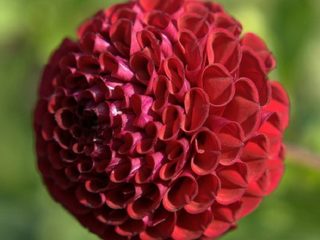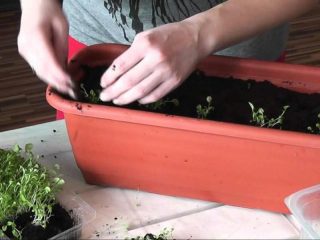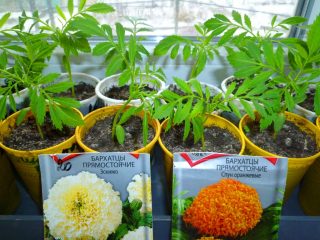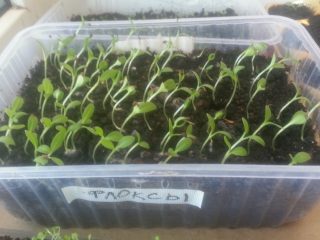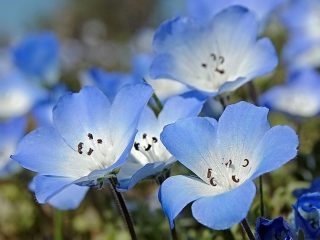Content
Growing ampelous dichondra from seeds is a reproduction method that is used for its initial cultivation, that is, when this plant does not yet exist on the garden plot. In other cases, the flower is propagated by cuttings or layering.
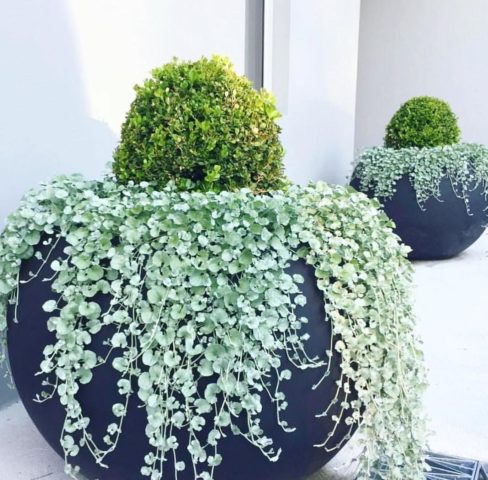
Dichondra ampelous can become a beautiful addition to other plants
Description of dichondra seeds + photo
The seeds of dichondra ampelous are smooth, almost spherical, resembling a two-chamber capsule in shape.
You can collect seed material yourself after the end of the flowering period of the plant. Nevertheless, gardeners still recommend buying ready-made certified seeds for reproduction on their site.
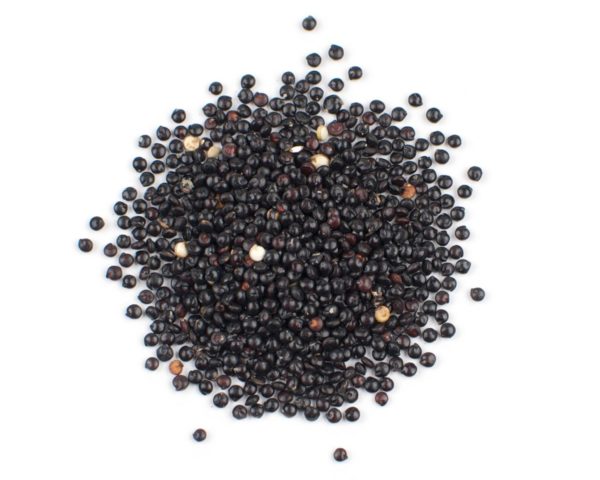
Bicameral seeds are almost round in shape
The nuances of growing seedlings
The process of growing dichondra with ampelous seeds and caring for seedlings at home is long, but effective. A characteristic feature of the shoots is thin and weak stems, which necessitates especially careful handling. In the case of a strong stretching of the stems, to prevent their fragility, pour loose light soil into the container, shaking it off the spoon with a toothpick.
How to plant dichondra seeds
There are two methods of growing dichondra from seeds at home - seedling and seedling. In the southern regions of the country, seeds can be sown directly into open soil. And in regions with long winters and possible spring frosts, it is better to give preference to the seedling method.
One of the stages of growing dichondra from seeds is presented in the photo:
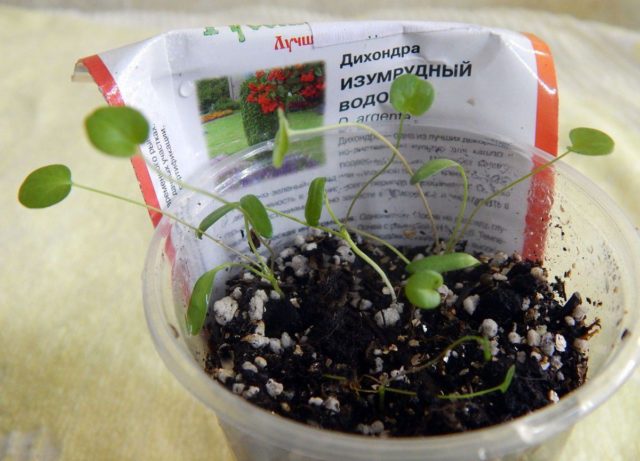
Growing a plant from seeds is a long process
When to sow dichondra for seedlings
Considering that seedlings are planted in a stationary place no earlier than 2 months after the emergence of seedlings, dichondra seeds should be planted for seedlings already in winter. The optimal time is January-February.
The choice of capacity and preparation of the soil
The soil for sowing seeds can be purchased ready-made or made independently by combining garden soil, sand, peat and compost in equal parts. The recommended acidity level is 6.6-8%. It is easy to check this with special test strips.
In order to prevent diseases and eliminate the likelihood of the appearance of small pests, the soil mixture is disinfected with a solution of potassium permanganate or by exposure to high temperatures (heated in the oven) before planting ampelny dichondra on seedlings.
To grow dichondra from seeds, it is better to plant the seed in separate containers. Peat pots that fit in one common container or large plastic cups work well. Seedlings grown in a common container will have to dive.
How to germinate dichondra seeds
Before planting the seed in the soil, it is germinated by soaking it in a small amount of liquid for several hours.
For this purpose, a special growth stimulator (Epin) diluted with water in accordance with the instructions, aloe juice (10 drops per 1 tbsp of water) or a solution of hydrogen peroxide (1 tbsp per glass of water) is suitable.
Granular seeds can be sown dry.
How to plant dichondra seeds
The algorithm for planting dichondra seeds for seedlings is as follows:
- fill the container with earth 2 cm below its sides:
- evenly moisten the soil with settled water, this can be done with a spray bottle;
- spread seeds on the surface of the soil, put 2-3 pieces in each pot or glass;
- cover the seed with a layer of soil mixture, the thickness of which should not exceed 0.8 mm;
- the container is covered with glass or plastic wrap, leaving small holes for ventilation.
The algorithm for planting dichondra seeds for seedlings can be seen in the video:
How many days does dichondra rise
If the sowing of dichondra seeds for seedlings was done correctly, the first shoots can be seen in a week. Young shoots grow slowly, for this reason, it is better to remove the cover from the container when they are strong enough.
How to grow dichondra from seeds
Plant seedlings are thin and fragile. Care should be organized not only regularly, but also delicate.
Microclimate
For planting dichondra with seeds and caring for seedlings, an illuminated place is chosen, for example, a windowsill. Lack of sunlight leads to excessive stretching of the stems and their weakness. The duration of daylight hours for ampelous dichondra seedlings should be 10-12 hours. In case of a lack of sunlight, it is recommended to provide the plants with additional lighting.
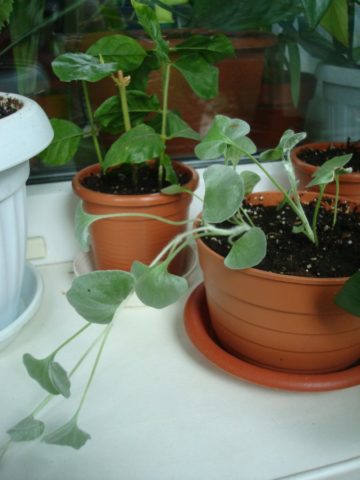
For growing seedlings, choose an illuminated place
Watering and feeding schedule
Water the seedlings as the soil dries. It is recommended to add a small amount of growth promoter to the water. Given the delicate structure of the seedlings, water the plant carefully. A good option is to use a spray bottle to moisten the soil.
Young seedlings need regular feeding. Ampelnaya dichondra will have to be fed 2 times a month. For this purpose, it is better to use ready-made complex fertilizers.
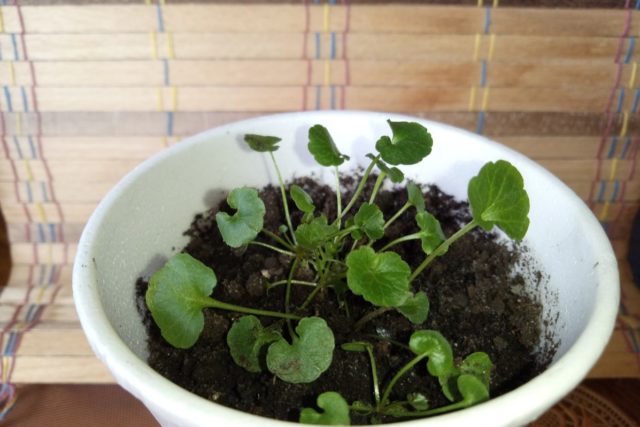
Thin stems require delicate care
When and how to dive dichondra
About a month after the emergence of shoots, when the third leaf appears, the seedlings dive. For this purpose, the soil in the container is watered abundantly, the seedlings with lumps of earth are carefully removed and transplanted into another container, filling them with the soil mixture until the cotyledon leaves.
Moreover, if the ground cover crop is dived into large pots, then it makes sense to plant the ampelous crop immediately in pots or special hanging baskets.
For better adaptation, containers with dived seedlings are placed in a place protected from direct sunlight, and after they have taken root, they are transferred to a lighted one. Daylight hours for dive seedlings are 12 hours.
The recommended temperature for this period is 18-20 ° C.
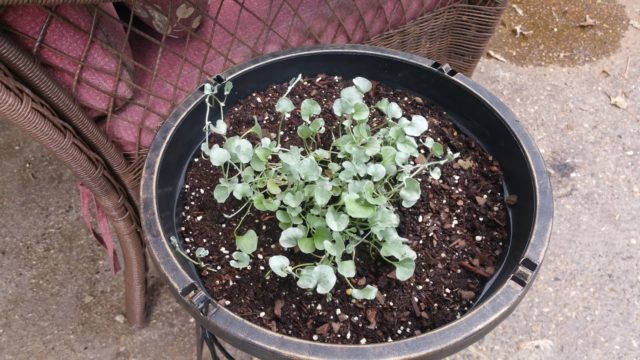
Seedlings dive right into the pots
Hardening
Before planting ampelous dichondra in open ground or placing the pots in a stationary place, the seedlings are hardened.
First, containers with seedlings are kept in the fresh air for 15-20 minutes, and then the duration of the hardening procedure is increased every day. This helps speed up the adaptation process of the plant.
Transfer to the ground
Dichondra ampelous, in contrast to the ground cover, is planted in pots of different sizes, decorative baskets or other containers with soil located above ground level. This is done no earlier than 2 months after the appearance of the first shoots.In warm regions of the country, the best time to plant an ampelous flower is May, and in cool regions - June.
Dichondra ampelous is a light-loving plant, but it takes root well not only in areas open to sunlight, but also in diffused shade. So, if the silver variety is ideally placed in a sunlit area, then the emerald one will feel comfortable near trees.
There are no special requirements for the composition of the soil, but ampelous dichondra grows better on loamy drained soil.
In the process of planting seedlings, holes are made of such a size that the root system of a plant removed from a container with a lump of earth is freely located.
The seedlings are carefully moved from the container to the hole, covered with earth and moistened abundantly.
When planting ampelous dichondra in open soil, one should take into account its low growth rate. Therefore, in order for the plantings to look beautiful, the distance between the seedlings should be no more than 10-15 cm.
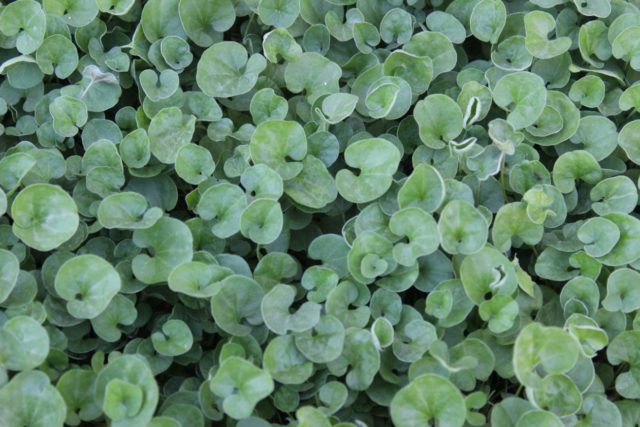
The plant will achieve good decorativeness in the 2nd year.
Conclusion
Growing ampelous dichondra from seeds is a simple process if done correctly. And regular further care will preserve the good decorative effect of the creeping plant for many years.


